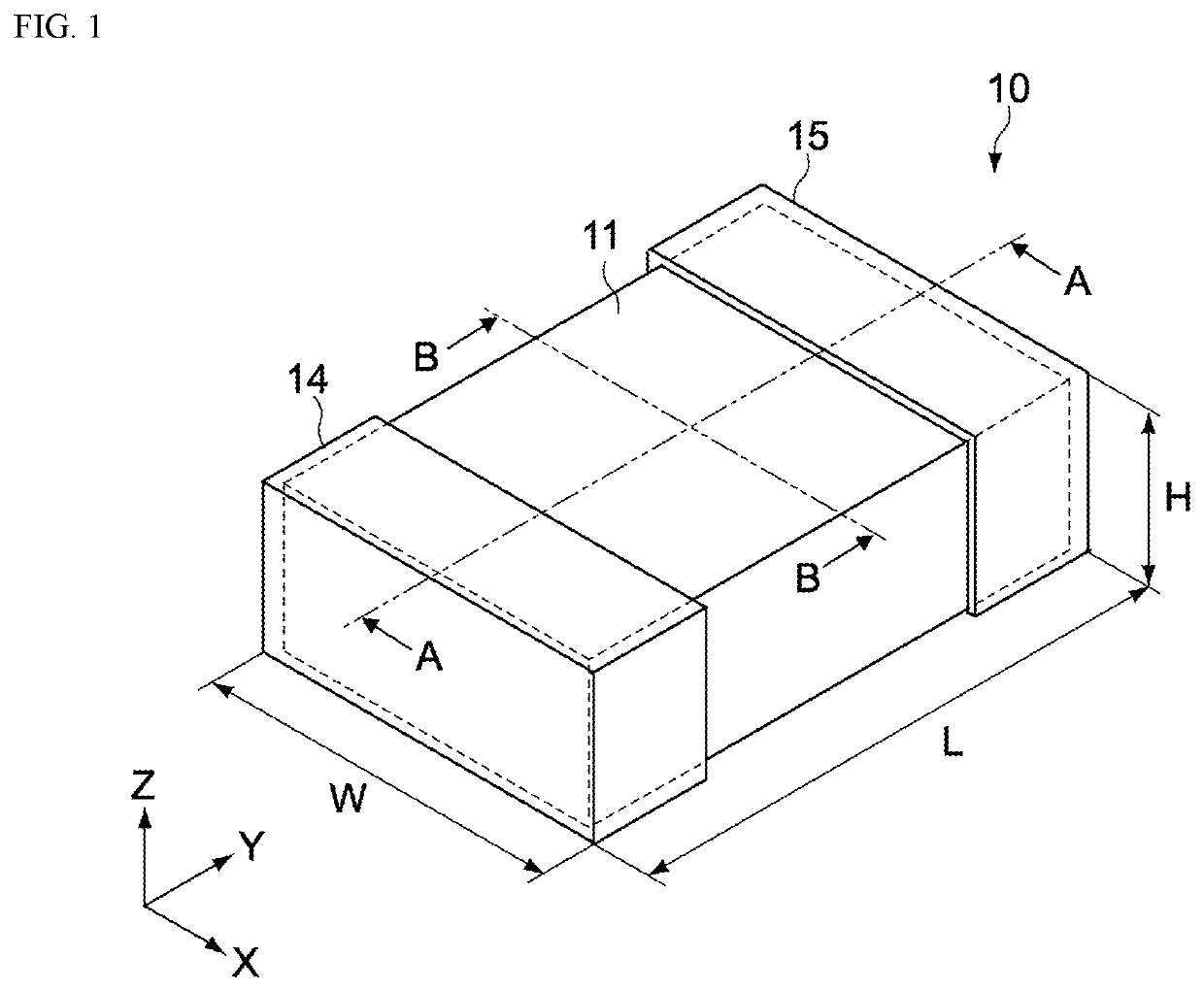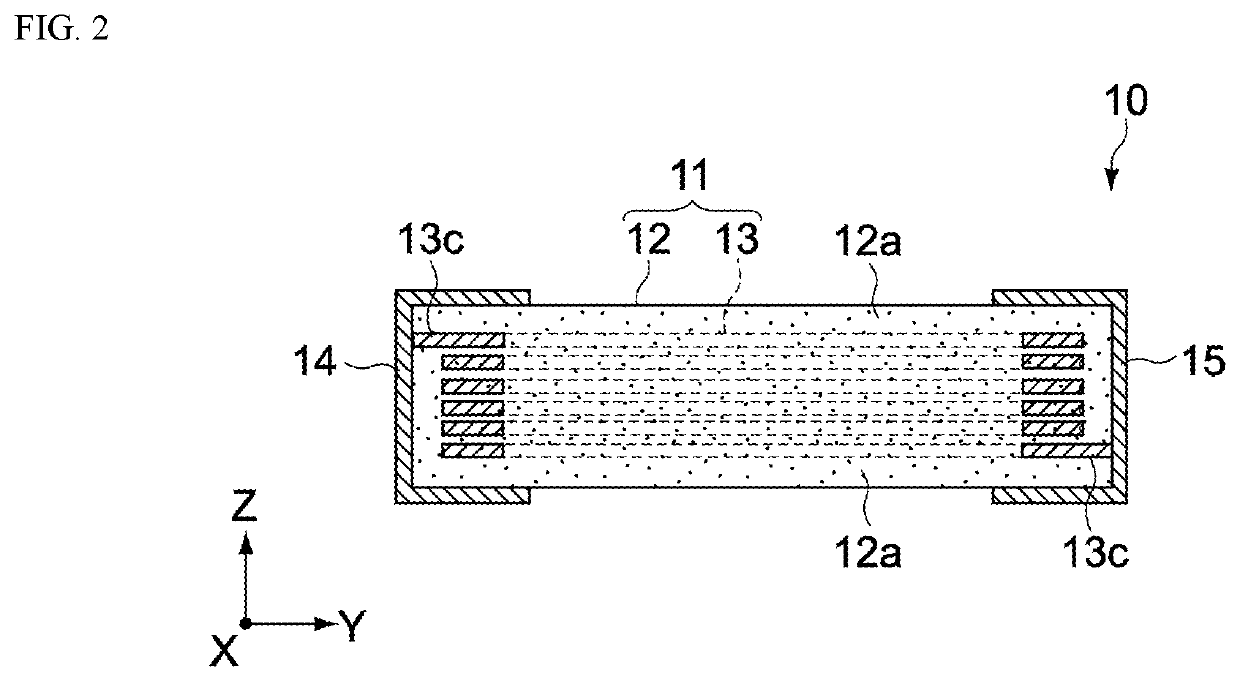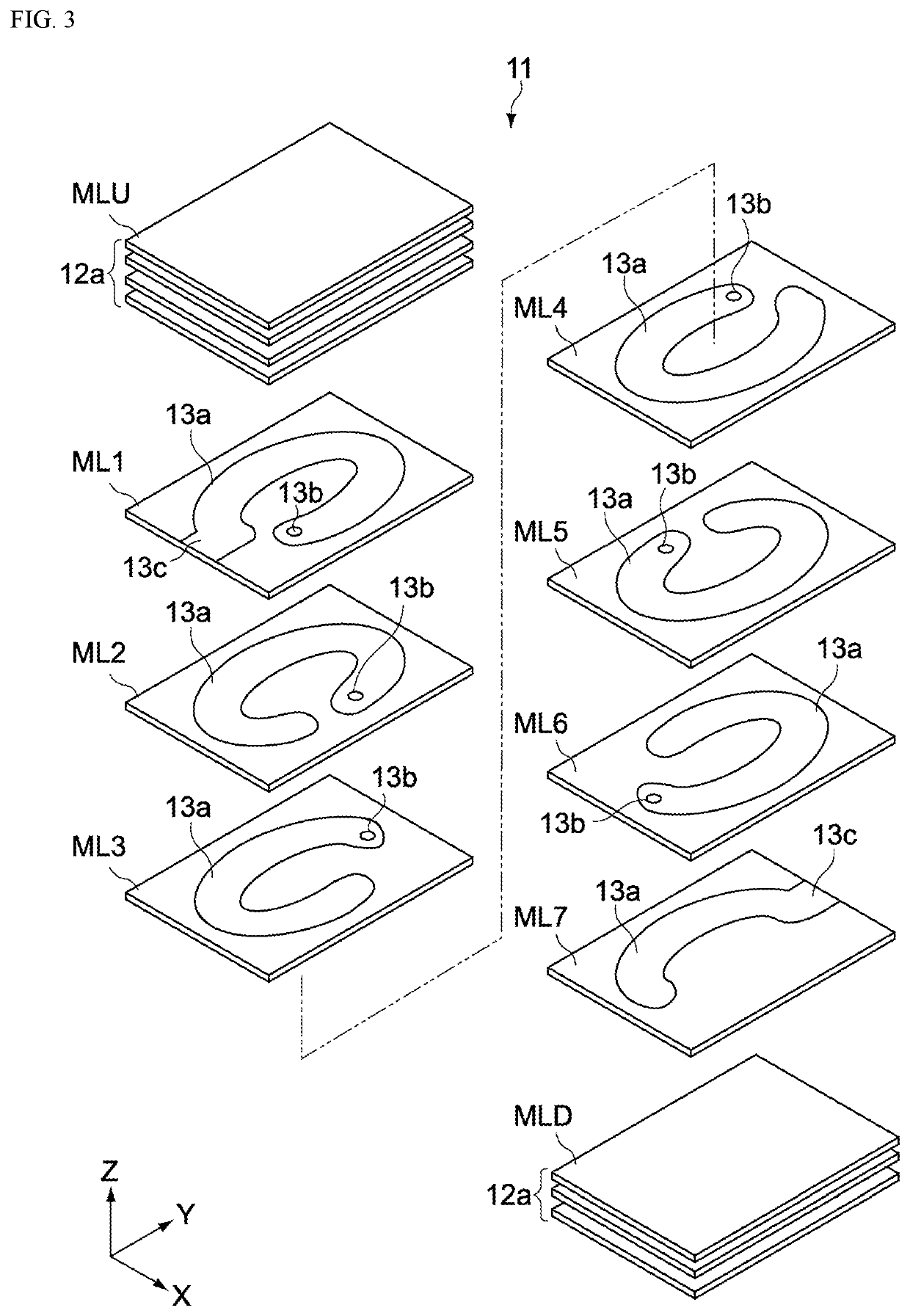Coil component
a coil and component technology, applied in the field of coil components, can solve the problems of shortening the pitch of the coil, reducing the magnetic permeability of the magnetic layer, and needing to thin the magnetic layer arranged between the sections of the coil, so as to improve the inductance of the coil component, improve the inductance, and keep the effect small
- Summary
- Abstract
- Description
- Claims
- Application Information
AI Technical Summary
Benefits of technology
Problems solved by technology
Method used
Image
Examples
first embodiment
1. First Embodiment
1.1 Overall Constitution of Coil Component 10
[0090]FIGS. 1 and 2 are drawings showing a coil component 10 pertaining to the first embodiment of the present invention. FIG. 1 is an oblique view of the coil component 10. FIG. 2 is a cross-sectional view of the coil component 10 along line A-A in FIG. 1. The coil component 10 is constituted as a multilayer inductor having a layer structure. The coil component 10 has a main body 11, a first external electrode 14, and a second external electrode 15.
[0091]The coil component 10 is formed as a rectangular solid shape having a width W in the X-axis direction, a length L in the Y-axis direction, and a height H in the Z-axis direction. The width W, the length L, and the height H of the coil component 10 can be determined arbitrarily. For example, the length L, the width W, and the height H of the coil component 10 may be set as 1.6 to 2 mm, 0.8 to 1.2 mm, and 0.4 to 1.0 mm, respectively.
[0092]The external electrodes 14 and 1...
example 1
1.4 Variation Example 1
[0206]FIG. 9 is a schematic view showing a part of the main body 11 of the coil component 10 pertaining to Variation Example 1 of the first embodiment. In FIG. 9, one layer of the first magnetic layers 12b, and two layers of the second magnetic layers 12c adjoining the one layer on the top and the bottom in the Z-axis direction, are extracted and shown. The coil component 10 pertaining to Variation Example 1 differs from the aforementioned embodiment only in the constitution of the first magnetic layers 12b.
[0207]Each of the first magnetic layers 12b pertaining to Variation Example 1 has one of oblate soft magnetic grain-containing layers 12b1 and two of fine grain layers 12b2. The respective fine grain layers 12b2 are arranged on the top face and the bottom face of each of the oblate soft magnetic grain-containing layers 12b1 in the Z-axis direction. It should be noted that only one of the fine grain layers 12b2 may be arranged on either the top face or the ...
example 2
1.5 Variation Example 2
[0217]FIG. 13 is a schematic view showing a micro-structure of a cross-section of the magnetic body part 12 pertaining to Variation Example 2 of the first embodiment. Each of the cover parts 12a and second magnetic layers 12c shown in FIG. 13A is constituted by the soft magnetic grains G1 and a resin F covering the soft magnetic grains G1. Each of the first magnetic layers 12b shown in FIG. 13B is constituted by soft magnetic grains G2 and G3 and the resin F covering the soft magnetic grains G2 and G3.
[0218]Unlike in the aforementioned embodiment, oxide films need not be formed on the soft magnetic grains G1, G2, and G3 pertaining to Variation Example 2. However, the soft magnetic grains G1, G2, and G3 are distributed in the resin F and thus insulated by the resin F instead of conducting with each other. Needless to say, the soft magnetic grains G1, G2, and G3 may have oxide films formed on them and may also be covered by the resin F. This means that, either w...
PUM
| Property | Measurement | Unit |
|---|---|---|
| thickness | aaaaa | aaaaa |
| thickness | aaaaa | aaaaa |
| size | aaaaa | aaaaa |
Abstract
Description
Claims
Application Information
 Login to View More
Login to View More - R&D
- Intellectual Property
- Life Sciences
- Materials
- Tech Scout
- Unparalleled Data Quality
- Higher Quality Content
- 60% Fewer Hallucinations
Browse by: Latest US Patents, China's latest patents, Technical Efficacy Thesaurus, Application Domain, Technology Topic, Popular Technical Reports.
© 2025 PatSnap. All rights reserved.Legal|Privacy policy|Modern Slavery Act Transparency Statement|Sitemap|About US| Contact US: help@patsnap.com



